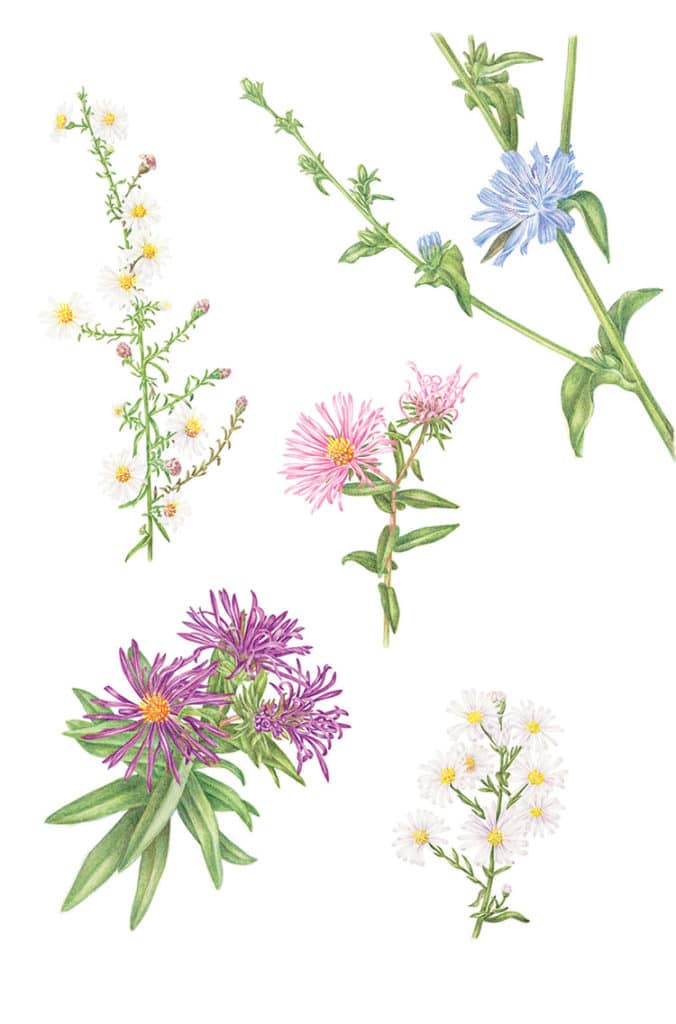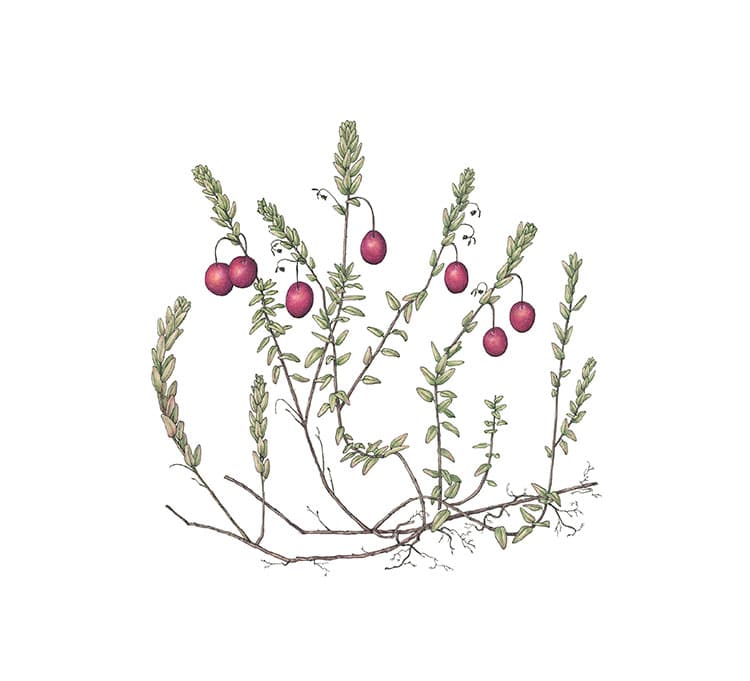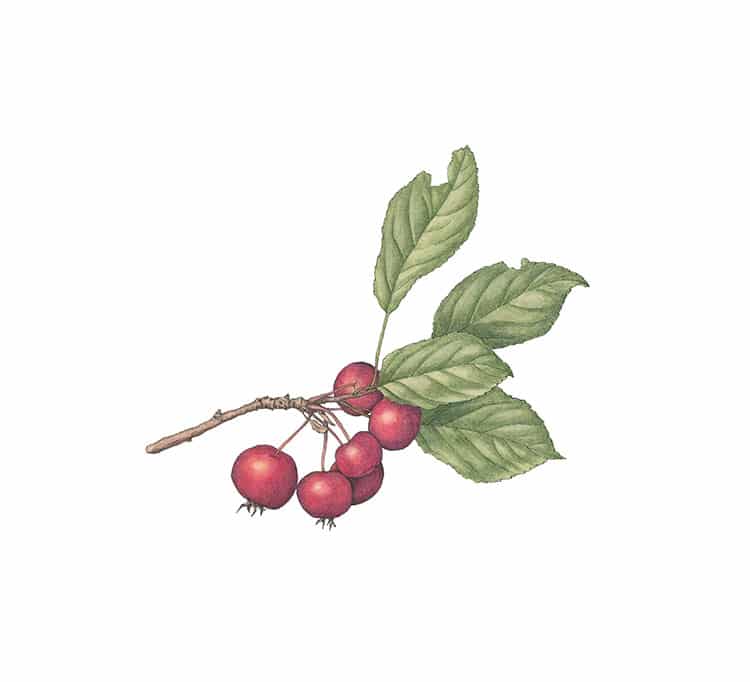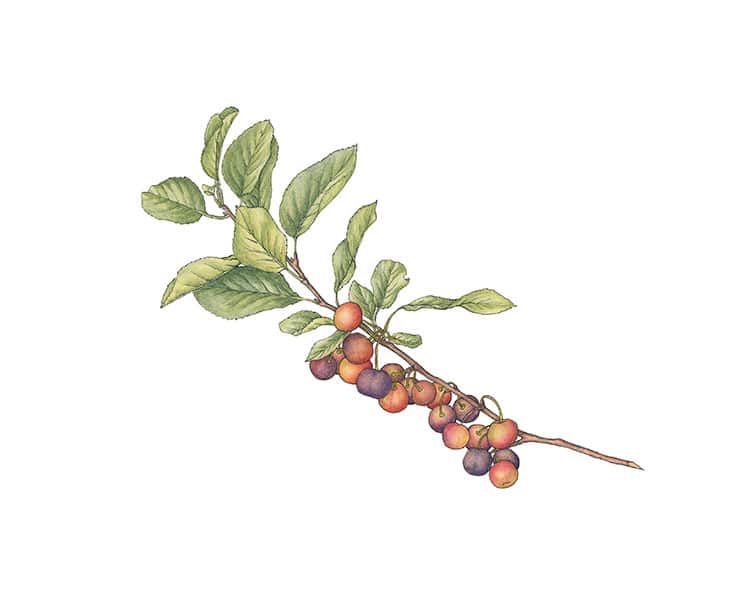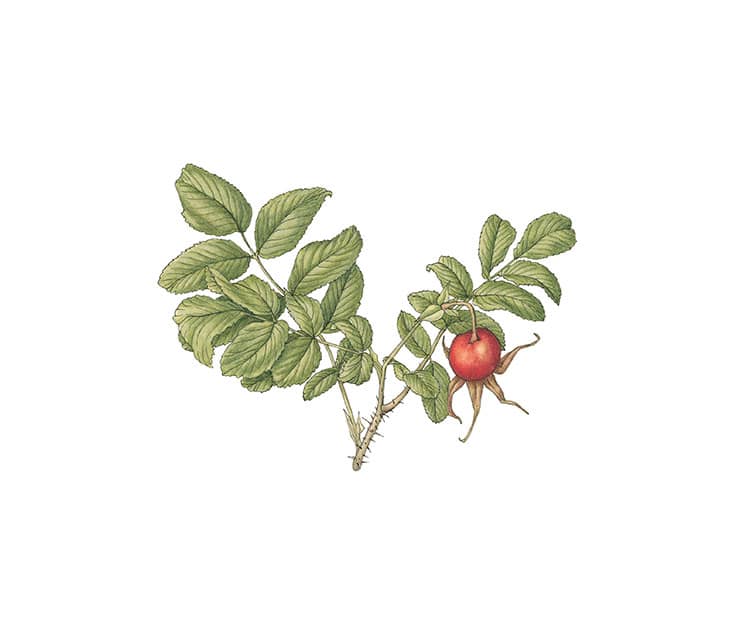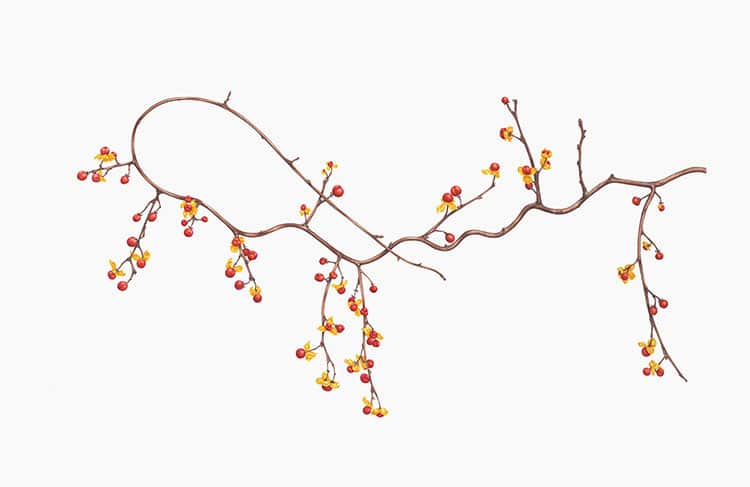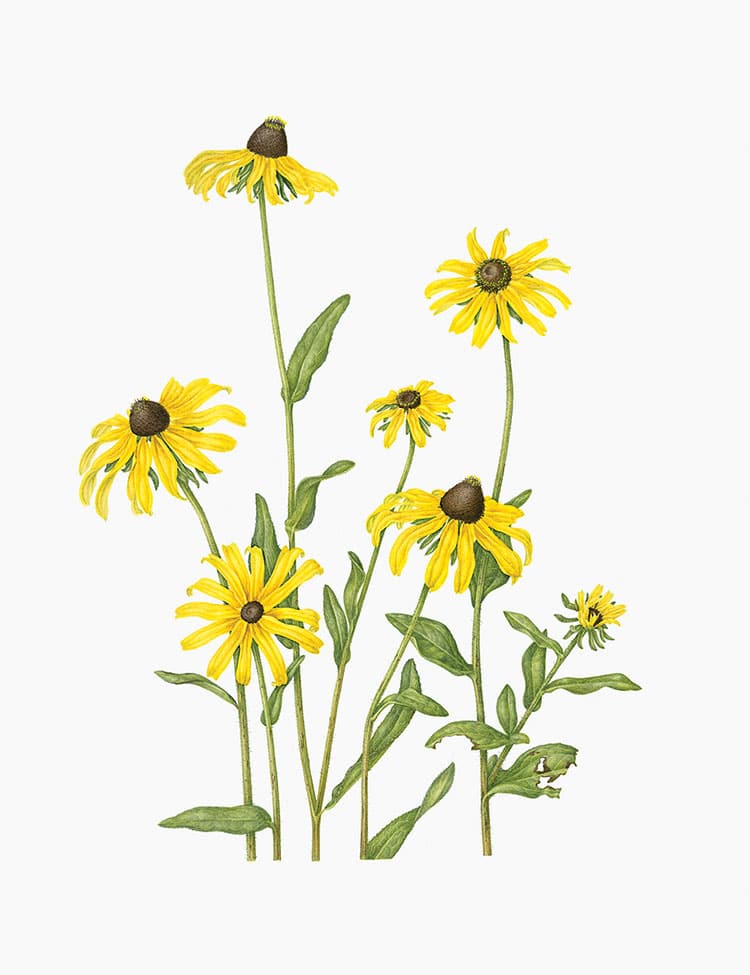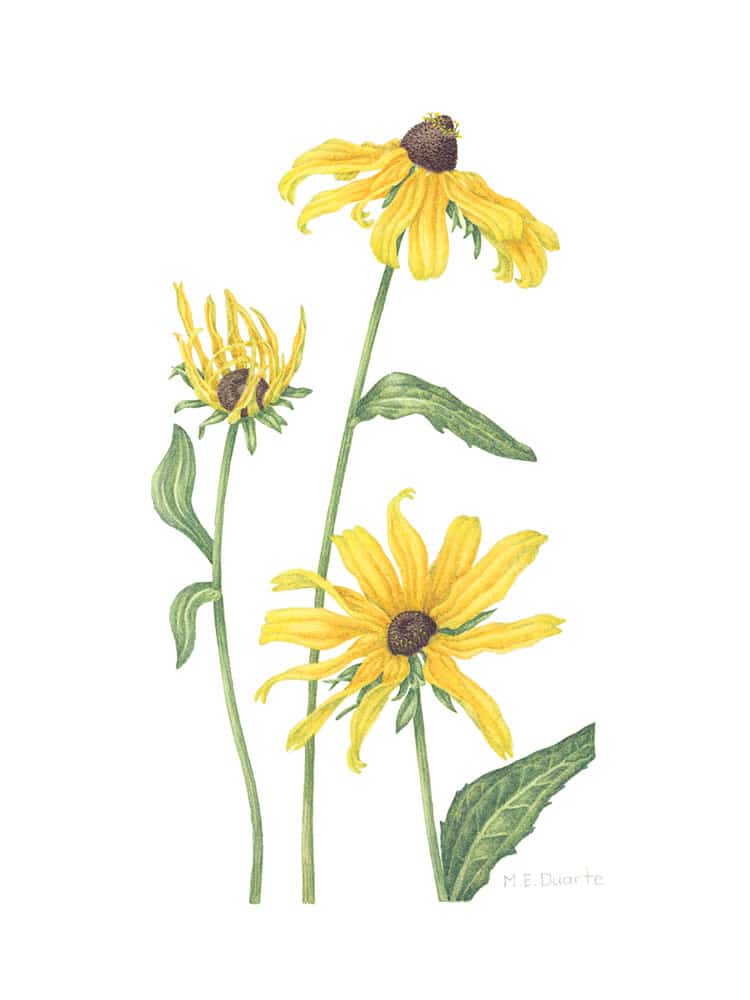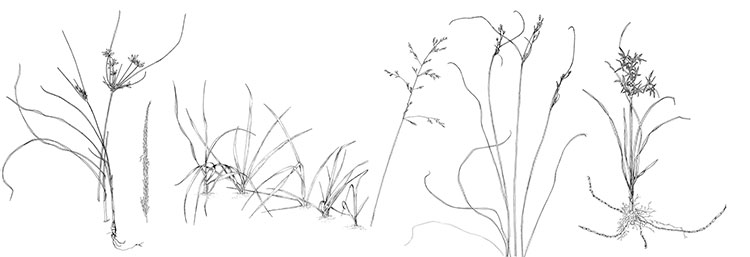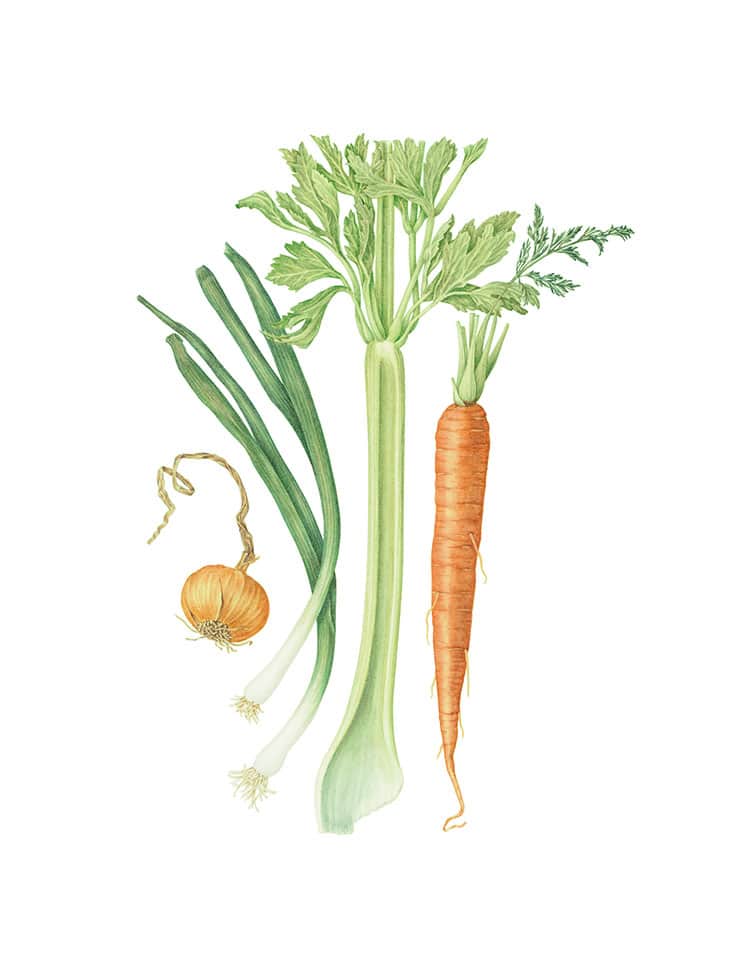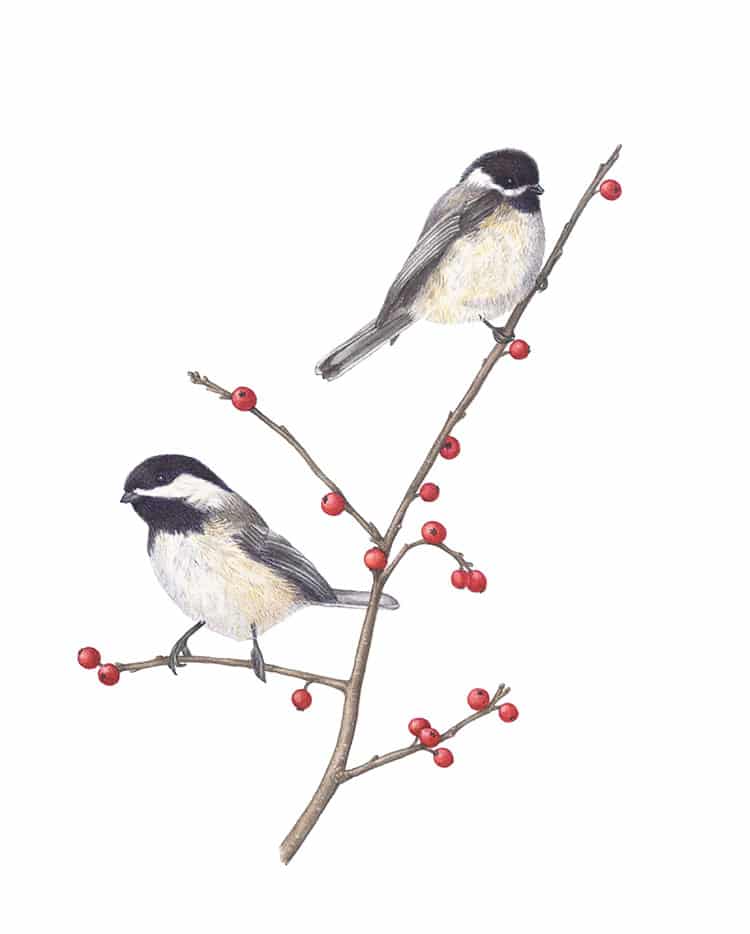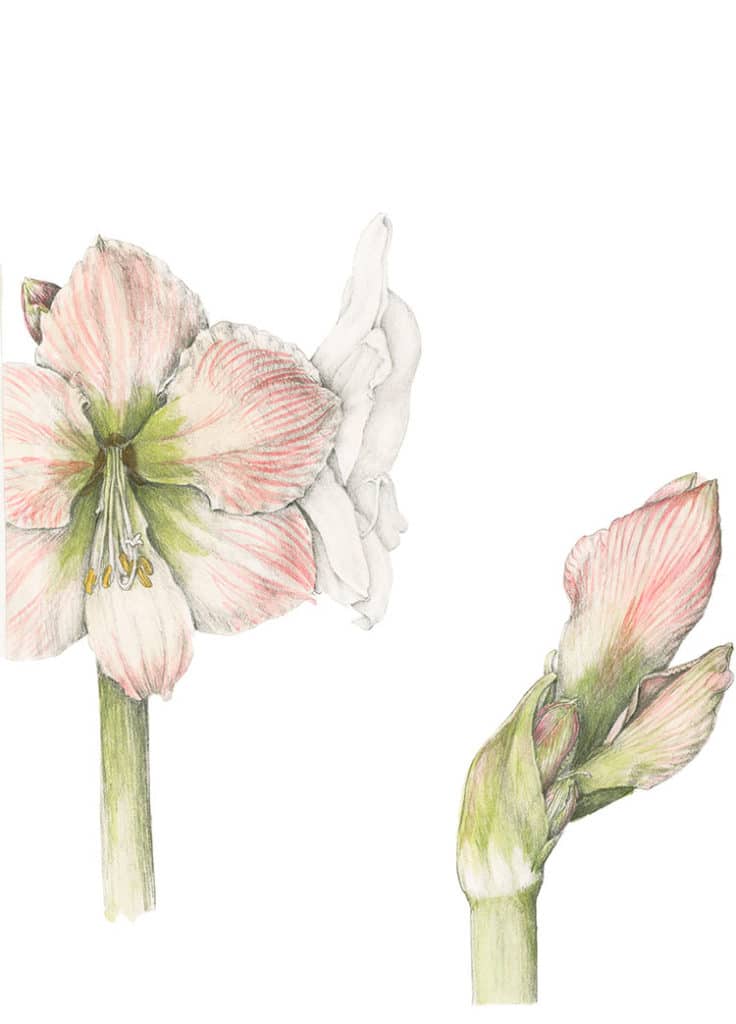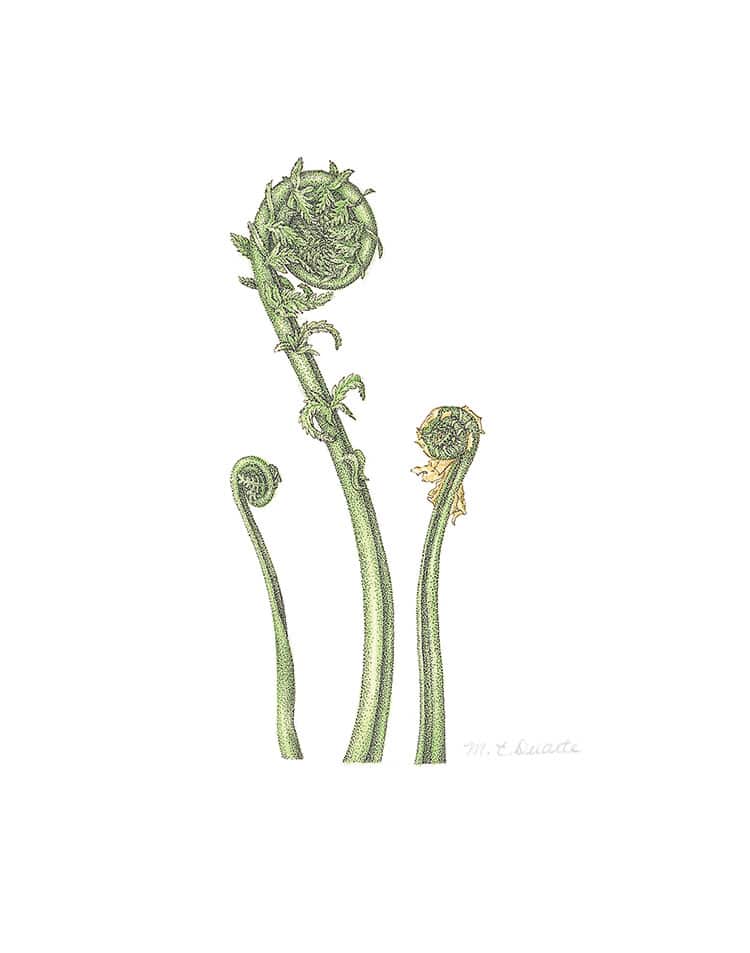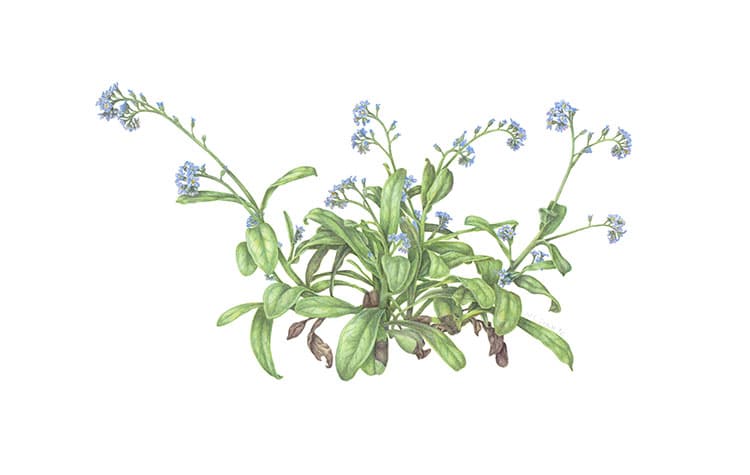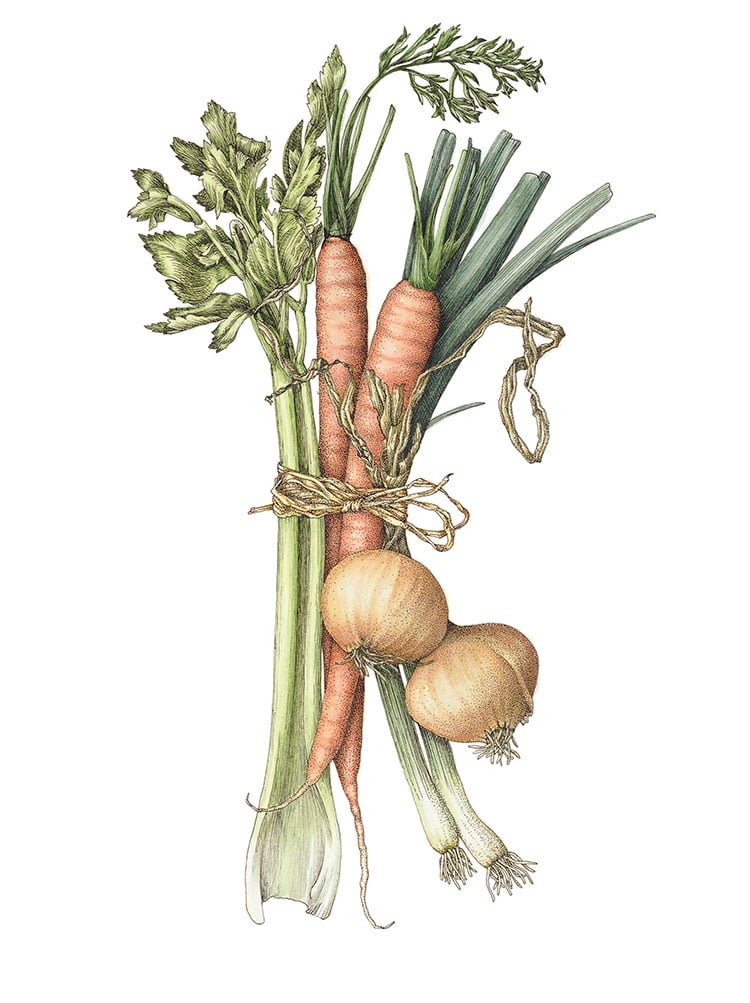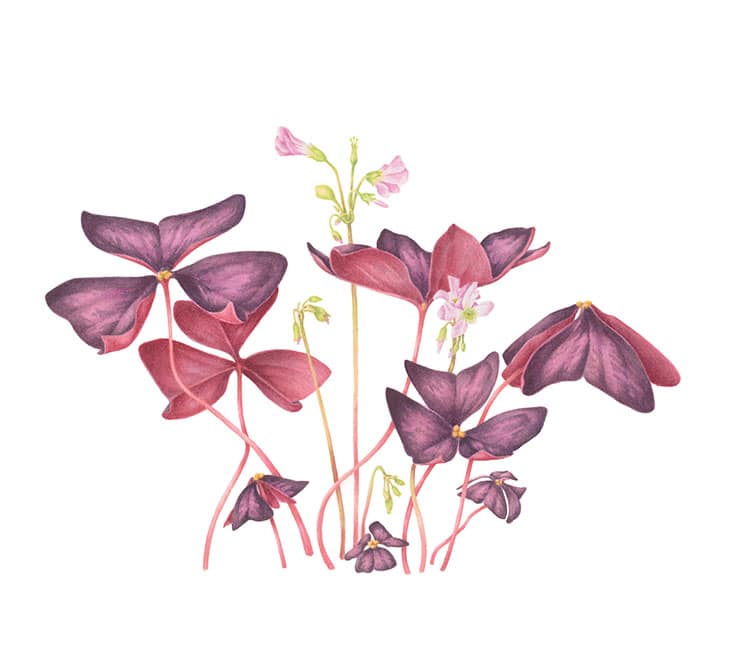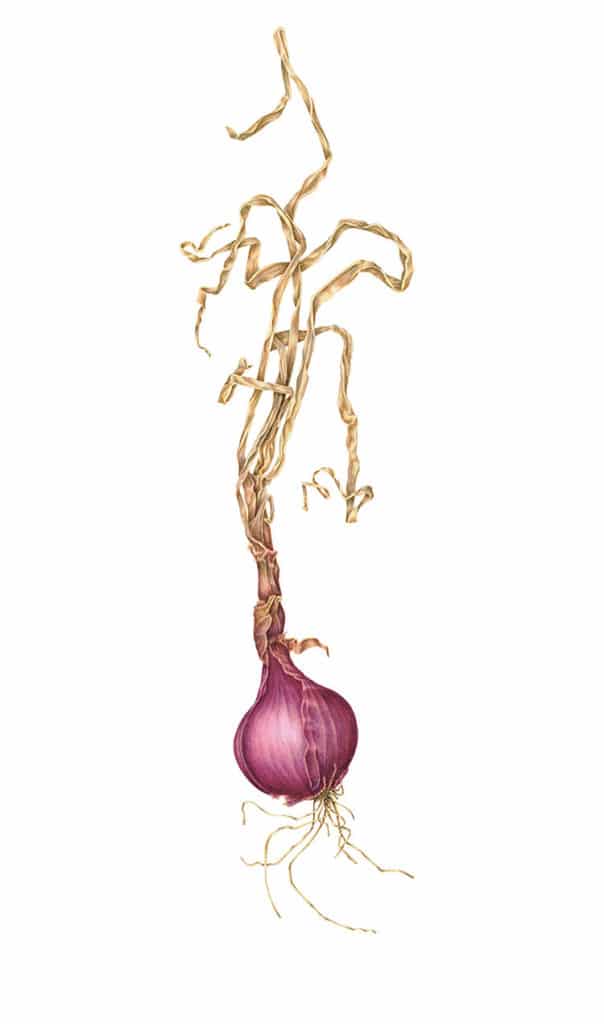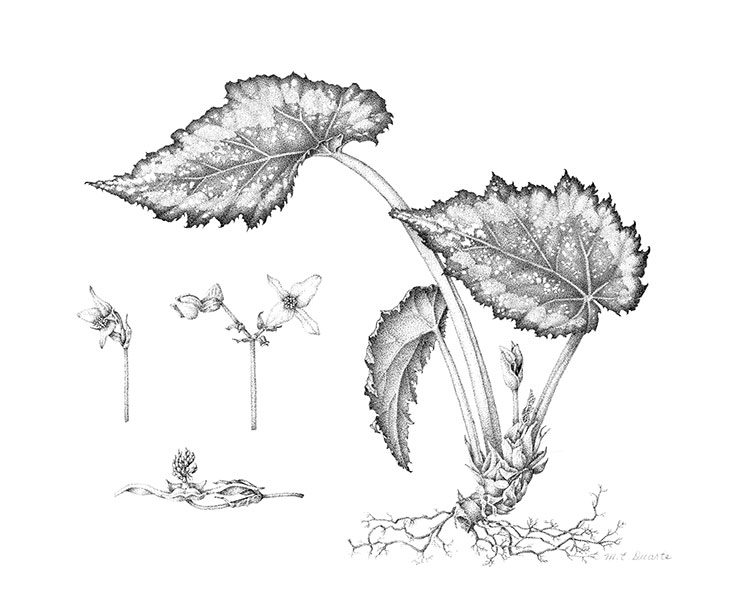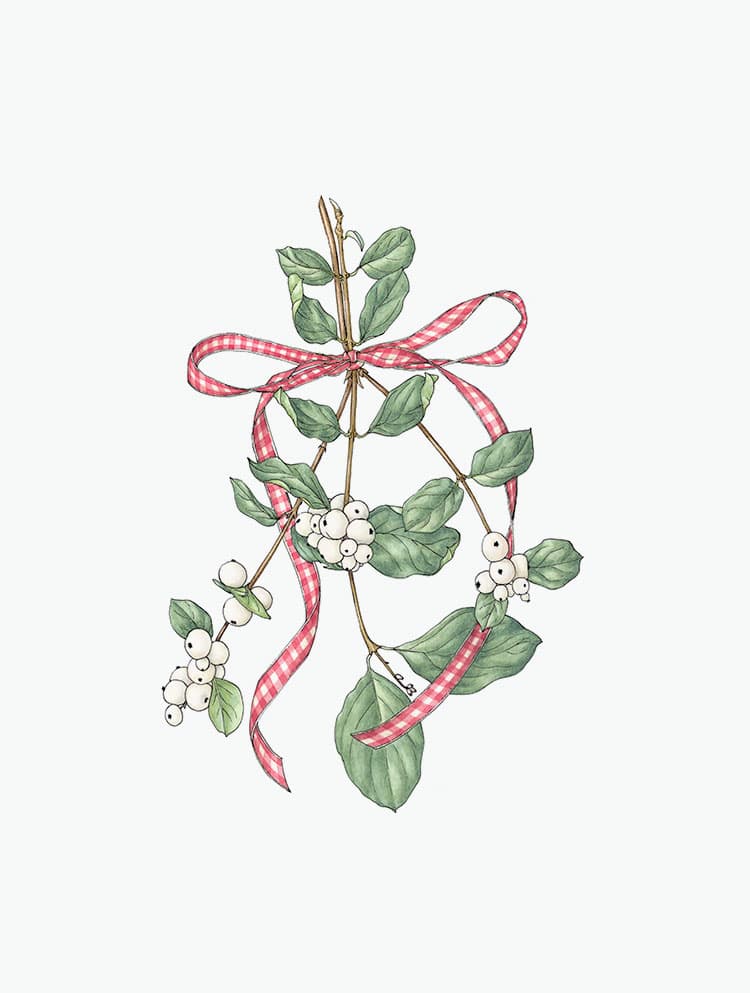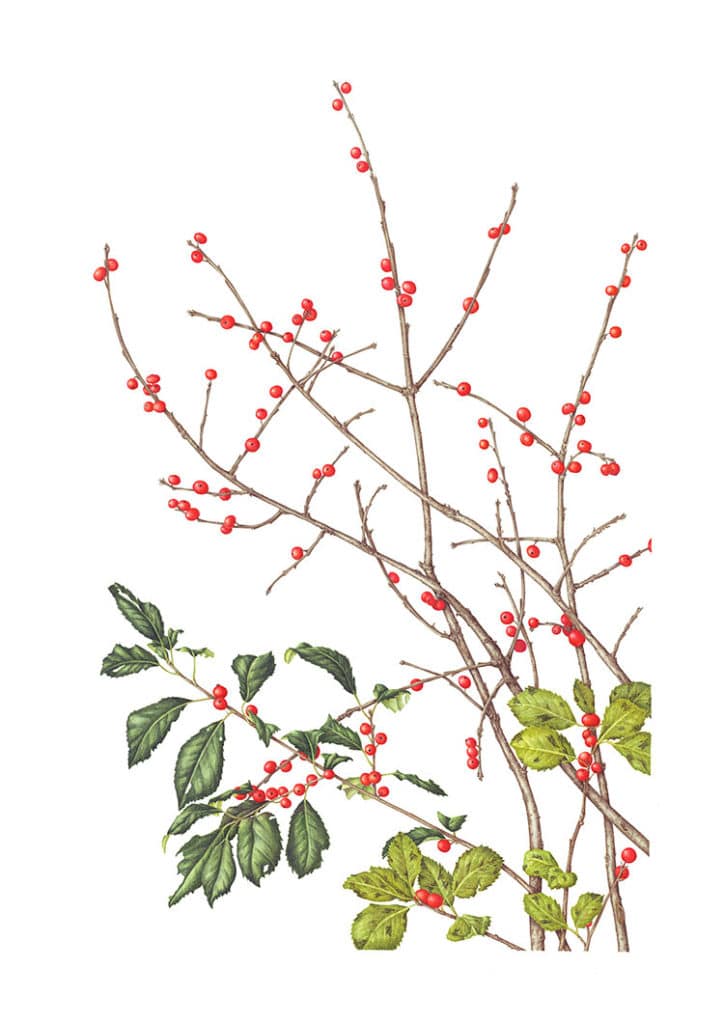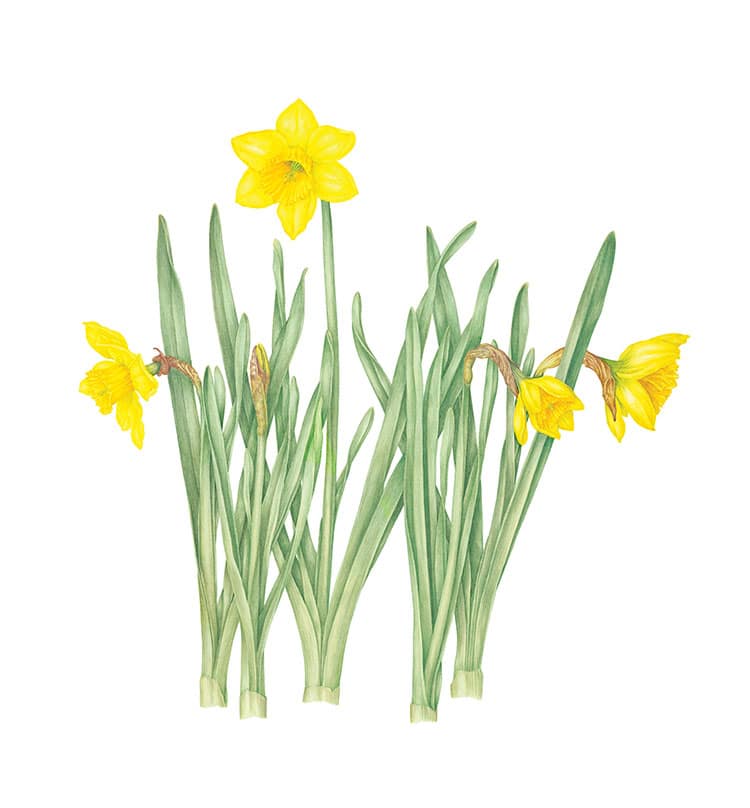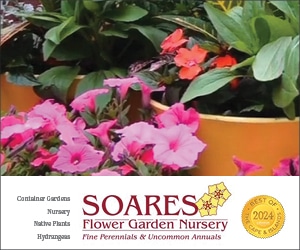
Wildflowers & Watercolor
Cape Cod Life / April 2020 / Home, Garden & Design, Nature
Writer: Brenna Collins
Wildflowers & Watercolor

Cape Cod Life / April 2020 / Home, Garden & Design, Nature
Writer: Brenna Collins
Botanical Artist Ellen Duarte expresses her green thumb through painting, in the garden, and in the classroom.
Artwork by Ellen Duarte

Whether it be our desire to connect more deeply with nature or simply an appreciation of beauty, plants surely have an effect on people. Between welcoming the budding trees of spring and bidding adieu to golden toned leaves at the conclusion of autumn, we experience life alongside their continuously flowing, evolutionary process. “People are generally connected to plants and have an emotional response to certain kinds. The goal is to transfer the beauty of plants onto the page and share that,” botanical artist Ellen Duarte reflects. Duarte stumbled upon botanical art during her first trip to the Boston Flower Show in 2007. An artist at heart and an avid gardener, she decided to combine her passions into one focus, conveying the fascinating nature of plants in detailed watercolors. Today, she is flourishing both in her painting and teaching at the Cape Cod Art Center in Barnstable.
Duarte’s creative pursuits date back to her childhood in Central Maine and have guided her into her early professional life. “Even as a child, I did a lot of drawing and pursued art. I went to college and became an art teacher and taught in Maine and on Cape Cod for a period of time. My husband went into business for himself, so I stopped teaching and became his bookkeeper and business partner. As the business grew, he outgrew my accounting skills and I decided I wasn’t pursuing accounting any further,” she laughs.
With a shift in careers on the horizon for Duarte, it came back to plants. “While teaching and as I raised my family, I did quite a lot of gardening. First it was flower gardening and then later I had a big vegetable garden. I really developed a love for plants,” she notes.
At that first Boston Flower Show, she found herself in an exhibit created by artists and students in a botanical art program. She recalls, “The minute I walked in there, I knew this is what I have to do. My art had sort of taken a back seat and I had dabbled in different things, but I had never focused on anything in particular. This gained my focus and I have stayed with it ever since.

“It is the beauty of botanical art that resonates with me. Plants are just fascinating; the more you learn about them, the more fascinating they become. I enjoy the realism in botanical illustration. I always liked realistic art and pursued perfection. This is one place where you are always in pursuit of perfection.” Her work, which exudes an impressive air of precision and beauty, has brought her as near to perfection as one can get. Multiple pieces have been shown in such notable exhibits as the New England Society of Botanical Artists and the Boston Flower Show.
The process behind her masterpieces involves patience in its many steps, beginning with studying the subject through drawing with pencil. A highly-detailed line drawing is followed with a tonal study, when shading is added. This is transferred to watercolor paper, at which point the painting begins. Duarte’s personal craft incorporates painting with two brushes, one solely for paint and the other with only water. “It is a slow process because it is built upon transparent layers of paint. It is different from other kinds of watercolor painting. Things appear to emerge slowly, rather than all at once. It is very meticulous.” This artwork is truly a science, one that she learned from the Friends of Wellesley College Botanic Gardens, where she completed their Botanical Art and Illustration program in 2015, one of only six of its kind in the country.

Her work’s initial inspiration is found in nature, and throughout this fifteen-year journey, Duarte has become more closely connected to the inner workings of wildlife.
Making homemade jelly led to her affinity for wild berries, which are present in a multitude of paintings. More recently, foraging has caught her interest, a pastime involving exploring wild food resources. “I have learned so much about the disconnect between people and how little we know about what we can eat in nature. I have translated this into painting,” she notes, motioning to a pen and wash masterpiece depicting carrots, onions, and celery—the base ingredients in many soups. She continues to lean towards plants she loves in her art, like the “Black-eyed Susan,” of which she has done three paintings. “My best work is painting plants that I really like, and that is mostly wildflowers,” she adds.
Her current piece in the works came to life while walking her two beagles, when she picked a variety of wildflowers and combined them into one composition. “It is an act of making the natural look natural on paper, where I particularly arrange various components.” Her creative eye leads these decisions, positioning a cluster of wild flowers that appear to have simply fallen together in such a manner.

Her passion is evident in the diverse collection of plants she studies and features in paintings, an act she describes as highlighting, “the plants you see, but never think about.” Aside from painting popular favorites, like the daffodil, Duarte brings our attention to those organisms that may not be admired, but play a role in our delicate ecosystem. Observing her own work, Duarte points out the inspiration behind her choices. For example, a watercolor featuring colorful plants she found in the winter highlights the subtle colors that persist through the grey season. With such a wide spectrum sparking her interest, she will often have multiple pieces in the works at once.
On the side, Duarte does pen and wash illustrations that began as Christmas cards for herself. With growing attention, various drawings are now sold as blank notes at local art centers. Each year she continues to craft a new Christmas card, with this year’s design showcasing a variety of whole spices and leaves delightfully taking the shape of a Christmas tree.
Since diving deeper into her botanical art, she has started teaching watercolor and mixed media classes at the Cape Cod Art Center, offering both a morning and afternoon class on Wednesdays. In her classes, participants have the opportunity to learn botanicals from her expertise, while Duarte gains a platform to share her passion and return to teaching art. Since the class offers lessons in both watercolor and pen and wash painting styles, Duarte’s time is divided into practicing both methods that are utilized in her work.
Duarte and her husband’s time is split between their main residence in Centerville and their home in Skowhegan, Maine. As a Maine native, this allows her to stay close to her roots while enjoying the long summers on Cape Cod. As for her future plans, again it comes back to gardening, with hopes of reviving gardens in both homes. “For years, I did a lot of vegetable gardening. I had 2,400 sq. ft. at a community garden, but it got to be too much. I would like to get back into flower gardening and work at the two houses. That should keep me busy enough with gardening,” she laughs. As a flower’s life process slowly unfolds, the same can be said for Duarte’s artwork. Her realistic creations capture specific plants at a fixed moment in time, all while emanating an acute sense of liveliness through the page. With her plans to return to gardening and continue teaching, inspiration for Ellen Duarte’s painting is sure to continue blooming.

